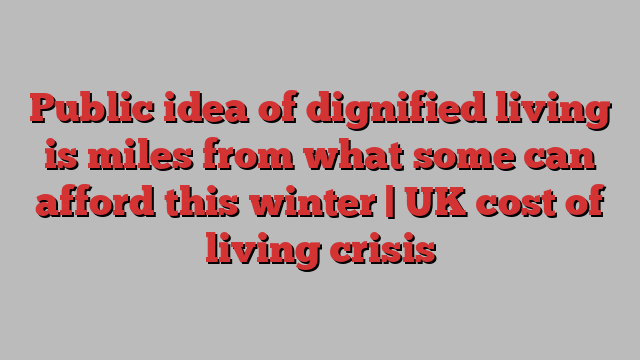
What constitutes a no-fripperies minimum standard of living in the UK in 2022? It’s not just sufficient money for three meals a day, suitable clothes, heating and a roof over one’s head, according to the public, but enough for a Netflix subscription, a smart speaker, the odd night out with friends and a supply of Covid masks.
It’s about being able to afford things such as a smartphone, a laptop, wifi, a cooker, a TV, the odd alcoholic drink and also enough to take an unostentatious week’s holiday away in the UK once a year, treat yourself to an occasional takeaway, buy presents for the children and family, and make charitable donations.
The Minimum Income Standard, agreed every year by teams of shrewd, socially representative, focus groups, marshalled by Loughborough University researchers, is effectively a dignity index tracking the cost of a relatively frugal, needs-not-wants, necessities-not-luxuries lifestyle – a “normal” existence, if you like – in the UK.
You may disagree. Some will see certain requirements as impossibly frivolous – Netflix, alcohol, really? Others will view it as joylessly austere. The point is it tracks what the general public considers the cost of a “normal” life as a participating member of society, not grim survival on destitution rations.
This unassuming lifestyle is now beginning to seem quaintly aspirational in the face of a cost of living crisis some predict will lead to the biggest squeeze on living standards for a century. Three meals a day and suitable clothes are already out of the window for many families, for whom a Netflix subscription and a holiday and a meal out with friends already sound like fantasy.
The study, published annually by the Joseph Rowntree Foundation, has always shown a gap between what the public agrees should be a minimum household income, and what low-income families actually earn, whether from minimum wage work or through increasingly meagre subsistence benefits.
This year, however, the gap between real incomes and the public vision of the cost of a no-nonsense “decent life” has become a widening chasm for millions. The standard was raised by record amounts to largely reflect higher inflation in energy and food, but after just a few months, those modest upward adjustments already look modest.
The standard may not have the sharp cut-through of a poverty measure, but it tells us with some precision what many households on low incomes will miss as their budgets shrivel away this winter – and it’s not just Netflix, a new winter coat and regular meals, but a sense of human dignity.